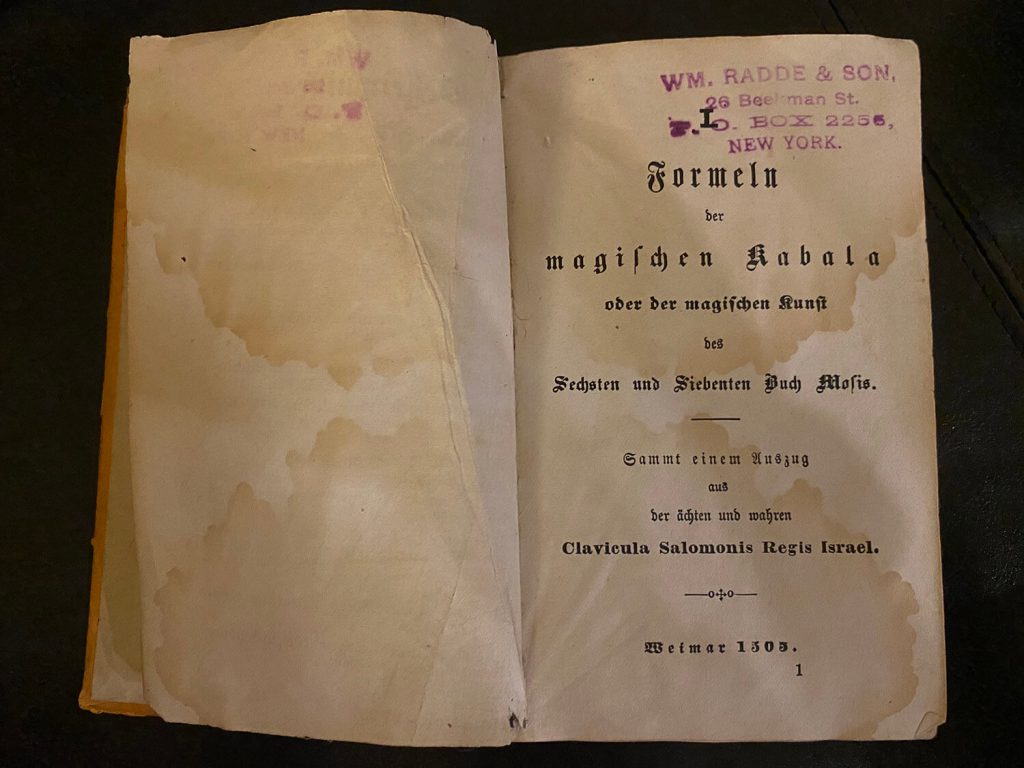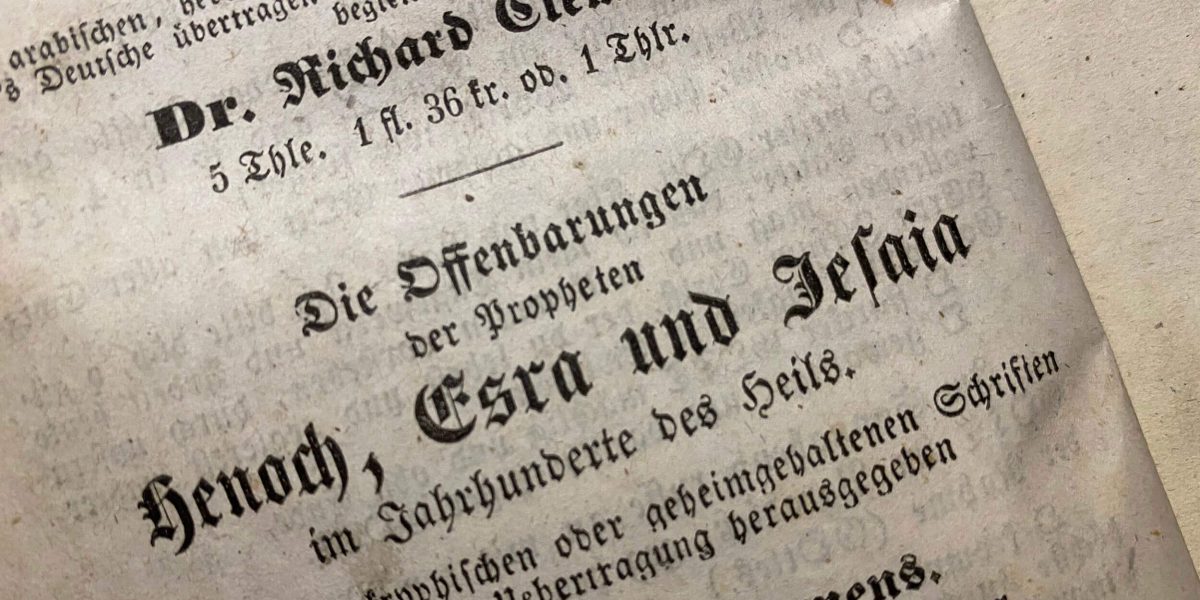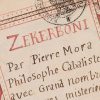by Johann Scheible, 1854
Mr. Johann Scheible was an antiquarian in Stuttgart, Germany, who published editions of grimoires and wrote on magical traditions in Germany. In addition to his own publications, he sold rare books and manuscripts. From his 1854 antiquarian book catalog, we know he owned a monumental collection of rare books and manuscripts with much of it dedicated to the occult sciences. The list includes 282 books, most on witchcraft, demonology, exorcism manuals, alchemic tomes, [unheard of] grimoire titles, both contemporary and antique copies in many languages. As for books under the Johann Scheible Stuttgart imprint, his most notable publications were:
- Das Kloster : weltlich und geistlich; meist aus der ältern deutschen Volks-, Wunder-, Curiositäten- und vorzugsweise komischen Literatur; zur Kultur- und Sittengeschichte in Wort und Bild. (12 volumes) Stuttgart 1845–1850
- Doktor Johannes Faust’s Magia naturalis et innaturalis oder Dreifacher Höllenzwang, letztes Testament und Siegelkunst. Nach einer kostbar ausgestatteten Handschrift in der Herzoglichen Bibliothek zu Koburg herausgegeben in 5 Abtheilungen. Stuttgart 1849.
- Das sechste und siebente Buch Mosis : das ist: Mosis magische Geisterkunst, das Geheimniß aller Geheimnisse; wort- und bildgetreu nach einer alten Handschrift. Stuttgart 1849.
Scheible’s printed grimoires under other names as well. Peter Hammer is one these names and is a topic of some debate. Peter Hammer was the imprint of a supposed publishing house. Allegedly located in Cologne from the 17th century onward, contemporaries were well-aware that such a publishing house never actually existed. Instead, the imprint was a fiction under which publishers and printers — in the Netherlands, France and Germany — evaded the open identification with books they published. Only certain books attracted this imprint: political satire, pirated editions, sexually explicit titles, and occult tiles especially those dealing openly with with ceremonial magic.
There are four known Peter Hammer grimoires bearing the dates of 1743, 1734, 1725 and again 1725 although there is some question to whether Scheible re-printed them or printed them for the first time himself under the Peter Hammer name in the mid 19th century.
Scheible also operated out of New York under the name, Wm. Radde & Son. His later expanded editions of Das VI und VII Buch Mosis bear this imprint. Interesting enough, the below copy of this Hammer grimoire bears a stamp with Scheible’s New York address.

Sammlung Der Größten Geheimnisse Ausserordentlicher Menschen In Alter Zeit, Peter Hammer, 1725 (Scheible: Stuttgart 1857)
That being said, It’s fair assumption that Scheible reinvented himself under the name Peter Hammer to print a short run of titles. Perhaps he was unable to safely print under his own name after scrutiny for his initial grimores. All of them were in fact printed between 1846 and 1851 and the Peter Hammer Scheible imprints are said to date between 1853 and 1857. This would also explain Wm. Radde, his next evolution as a publisher.
Whether he invented them or merely reprinted the titles years following their initial publication can’t truly be known but the above would be a logical conclusion. What we do know is that they were a means to expand his catalog, which you can view below.




